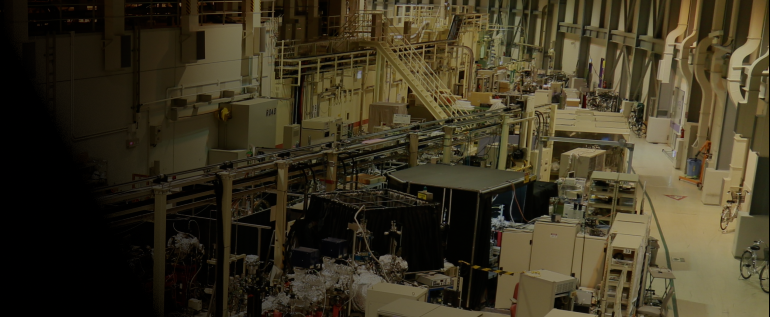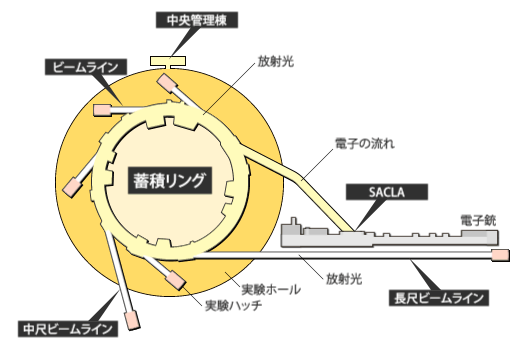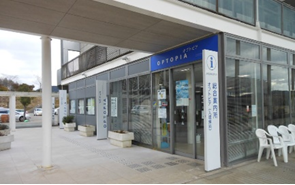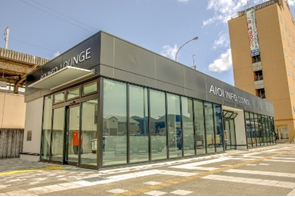- 詳細
- 投稿者: Super User
- カテゴリ: about
- 参照数: 4965
分析・解析手法一覧
| 回折・散乱 | 分光 | イメージング | 加工 |
回折・散乱
| 粉末結晶構造解析 | 単結晶・薄膜解析 | 小角散乱 | タンパク質結晶構造解析 | 回折イメージング |
・粉末
半導体検出器多連装型粉末回折計 →新しい機能性を持つナノ合金材料設計へ時間分解粉末X線回折装置 →鉄鋼材料の高性能化・高品質化へ
全散乱計測装置 →化学結合に基づく構造材料の寿命予測へ
ハイスループット粉末X線回折計 →固体酸化物燃料電池(SOFC)の熱耐久性の改善へ
XRD-XAFS測定システム →動作中の電池のようす
高分解能粉末回折装置 →イトカワの起源
検出器7連装PDF解析装置 →電池のしくみ解明への新たな道
・高圧
高温高圧プレス装置 →アルミで水素を貯める低温高圧X線回析装置 →夢の「室温超電導」に向けて
ハイパワーナノ秒レーザー利用実験プラットフォーム →破壊のデザインへ向けて
大容量高圧発生装置 →地球の奥へ沈み込んだ海底のゆくえ
変形機構付き大容量高圧発生装置 →地球深部で起こる地震の原因
高圧マイクロX線回析装置 →地球深部の描像と地球の進化を解き明かす
・バルク結晶(単結晶・多結晶)
汎用型多軸回折計 →より丈夫で長持ちするステンレスの実現へ高エネルギーⅩ線構造解析装置 →機能性材料の電子密度レベルの精密解析
ピンポイント構造計測装置 →結晶相転移を利用した迅速応答が可能なソフトロボットの開発へ
時間分割Ⅹ線解析装置 →光で絶縁体を金属にするメカニズム
高角度分解能Ⅹ線回折装置 →ナノシートで新しい太陽電池へ
多目的多軸Ⅹ線回折計 →高機能な構造材料の実現に向けて
応力・イメージング測定装置 →溶接技術の高度化に伴う健全社会の実現へ
・薄膜・表面
高角度分解能Ⅹ線解析装置 →ユビキタス社会のストレージへ大型表面Ⅹ線解析装置(超高真空装置付) →電流も磁石も使わない磁気スイッチングへ
結晶成長その場Ⅹ線解析装置 →窒化ガリウムのふしぎな変形現象をその場観測
マイクロ・ナノビームⅩ線回析装置 →歪制御によるデバイスの性能向上へ
軟Ⅹ線オプトスピントロニクス実験装置 →特定の元素だけマッピング
多目的多軸Ⅹ線回析装置 →塗って作れる太陽電池で変換効率10%を達成
・小角散乱
SEC-SAXSシステム →植物に窒素栄養を供給するタンパク質の全体像の解明へ高時間分解・X線回折・散乱装置 →昆虫の高速羽ばたきのしくみの解明に向けて
小角X線散乱測定装置 →タフネス・しなやかさを分子レベルで制御する
小角・広角散乱装置 →次世代構造材料として期待されるミノムシシルク
小角散乱測定装置 →せっけんのふしぎな性質
小角・極小角散乱測定装置 →転がり抵抗の低い構成のタイヤゴムの開発
小角散乱測定装置 →繊維の構造・物性と製造条件との相関から生産コスト削減を目指す
・広角散乱
小角・広角散乱装置 →次世代構造材料として期待されるミノムシシルク微小角入射X線散乱解析装置 →効率的な電荷輸送性薄膜材料の設計指針
広角散乱装置 →ナノ空間に閉じ込めた液晶分子の表面力とせん断効果
・単結晶
タンパク質結晶回折計 →最適な腸内環境の実現へ自動化された単結晶回折装置 →凍結したタンパク質結晶からの自動データ測定
DAPHNIS →タンパク質の瞬間の様子をとらえる
タンパク質結晶回折計 →病原性大腸菌に対する薬剤の開発へ
タンパク質結晶X線回折計 →血圧を調節するタンパク質と血圧を下げる薬のかたちを見た
タンパク質結晶用回折計 →健康な胃腸環境の実現へ
生体高分子高精度回折強度測定装置 →新型コロナウィルスを標的とした高親和性ACE2変異体の開発
高エネルギーX線用回折計 →光合成に関わるタンパク質の超高分解能構造解析
・白色ラウエ
白色X線回折計 →金属材料の局所応力評価・3DXRD
走査型3DXRD顕微鏡 →部品の信頼性向上と製造プロセス開発に貢献分光
| Ⅹ線吸収分光 | Ⅹ線光電子分光 | Ⅹ線MCD | 非弾性・核共鳴散乱 | 赤外分光 |
・XAFS
二次元転換電子収量XAFS装置 →錆びにくい鋼材表面の開発へ汎用XAFS装置(軟X線) →ガラスの超硬材料の実現へ
その場XAFS測定装置 →CO₂からメタノールへの変換効率高める触媒を新開発
XAFS測定装置 →希少元素のリサイクルへ
XAFS装置 →タングステンリサイクル技術の確立へ
XAFS-IR同時計測装置 →より高性能なCO₂水素化触媒を目指して
汎用XAFS測定装置 →高容量正極材料の充放電に伴う酸化還元反応の解明
XRD-XAFS測定システム →動作中の電池の中のようす
XAFS計測装置 →より緩和な環境下で高い活性を示す触媒
・高分解能XAFS
X線発光分光装置 →新しい機能性をもつ物質・材料開発へ・時分割XAFS
pump-probe時間分解測定装置 →デバイスの動作の瞬間を観察し、より高性能・クリーンなデバイス開発へエネルギー分散型XAFS装置 →貴金属いらずの排ガス浄化
高速時間分解QXAFS装置 →高い活性、耐久性をもっナノ粒子触媒材料開発へ
XAFS/XRD同時測定装置 →AIと数学を駆使したリチウムイオン電池の開発
SPINETT →分子の構造変化を高い空間分解能で追跡する分子動画
・HAXPES
3次元空間分解HAXPES装置 →スピントロニクスによる高性能メモリ開発へ硬X線光電子分光装置 →放射線に負けない熱電発電の実現に向けて
高エネルギー分解能HAPES装置 →電子を取り出して物質の性質を調べる
硬X線光電子分光装置 →貴金属をまねて水素をつくる
汎用硬X線光電子分光装置 →Li電池材料の高性能化
・軟X線ARPES
軟X線マイクロビームARPES装置 →低消費電力デバイスを可能にするトポロジカル物質軟X線角度分解光電子分光装置 →超伝導になる電子をとらえる
二次元光電子回折装置 →エネルギーを有効活用するパワーデバイスの実現へ
・軟X線光電子分光
表面化学実験装置 →炭素の網(グラフェン)を速い分子が通り抜ける・軟X線PEEM
光電子顕微鏡(PEEM) →土壌汚染問題へのアプローチ
・X線MCD
電磁石式軟X線MCD装置 →分子を利用した集積量子演算への第一歩走査型軟X線MCD顕微鏡 →電界で磁壁を動かす
強磁場低温硬X線MCD装置 →新原理に基づく超低消費電力磁気メモリ
・高分解能・非共鳴非弾性散乱
高分解能X線非弾性散乱スペクトロメータ →格子振動の観測を通じて高温超伝導体の機構解明へ
高分解能X線非弾性散乱スペクトロメータ →液体のダイナミクスを観測する
高分解能非弾性X線散乱装置 →地球内部を知る
・コンプトン散乱
磁気コンプトン散乱装置 →磁石内部の磁気状態観測硬分解コンプトン散乱装置 →高温超伝導を引き起こす電子状態の可視化
汎用大型ハドロン分光装置 →高エネルギーのガンマ線で探るクォークの世界
・発光分光・RIXS・ラマン散乱
非弾性分光器 →高効率触媒・溶媒のメカニズム解明X線非弾性散乱スペクトロメータ →クリーンな水素社会の実現へ
軟X線発光分光装置 →より長持ちするリチウムイオン電池の実現へ
・核共鳴散乱
γ線準弾性散乱装置 →1000万分の1秒単位で原子・分子の動きを捉える放射光メスバウアー分光装置 →新機能をもつ磁性・スピントロニクス材料の設計へ
放射光メスバウアー分光装置 →水素を貯めるしくみを探る
核共鳴非弾性散乱装置 →人工触媒の設計に向けて
・赤外分光
赤外近接場分光装置 →赤外線領域で波長よりも小さいネノメートルオーダーの空間分解能磁気光学顕微鏡 →高磁場・低温での広帯域顕微赤外分光
長作動距離顕微鏡 →個体でも液体でもないガラス
高空間分解顕微鏡 →加齢による毛髪根元の倒れの回復を目指して
イメージング
| イメージング・CT | ラミノグラフィ | 分光イメージング | 特殊イメージング |
・イメージング・CT
X線イメージング装置 →糖尿病による腎臓の変化マルチスケールCT →部材の信頼性向上、プロセス・設計・技術体系を革新
汎用X線イメージング装置 →冷凍食品内部の氷の観察
高エネルギーX線イメージング装置 →製鉄武器のはじまりと広がりの謎に迫る
X線ナノCT →ヘアケアのために
X線マイクロCT →おいしい手延べそうめん
X線マイクロイメージング計測装置 →金属材料のき裂観察
統合CT →未知の地球外物質の素顔を調べる
X線ナノCT/ナノイメージング →海底堆積物に膨大な”微小マンガン粒”を発見
・トポグラフィ
白色X線回折計 →省エネルギー社会をもたらす次世代半導体材料
・ラミノグラフィ
X線イメージング装置 →繰返し通電を受けるダイアタッチはんだ接合部のその場観察
・XAFSイメージング
ナノビーム走査型X線MCD顕微鏡 →より強力な永久磁石へ全視野型顕微分光計測装置 →高効率で長寿命なリチウムイオン電池へ向けて
・蛍光マッピング(SFXM)
走査型蛍光X線顕微鏡 →脂肪酸の細胞内部局在を可視化し、脂質代謝変動を明らかに走査型顕微分光計測装置 →より安全でより有効な化学療法の実現へ
マイクロビーム形成実験装置 →高効率かつ省エネルギーなLEDの更なる普及へ
走査型軟X線顕微鏡 →エコな珪藻の有効活用へ
・高速イメージング
高速度X線イメージング装置 →実際に見るところから鉄鋼材料の生産性・特性向上の指針へ・タイコグラフィ・CDI
MAXIC →触媒材料のありのままの姿を捉えるタイコグラフィー装置 →電子顕微鏡ではみえない材料をX線でみる
・コンプトンイメージング
コンプトン散乱イメージング装置 →充放電過程でのリチウムイオンの可視化加工
| Ⅹ線加工 |
・微細加工
X線微細加工装置 →新しい機能性を有するシステム創製とその構成要素の部品開発- 詳細
- 投稿者: Super User
- カテゴリ: about
- 参照数: 8069
放射光とは
| 放射光施設とは | 利用分野と研究例 | 歴史 | SPring-8とSACLA |

ほぼ光速で直進する電子が、その進行方向を磁石などによって変えられた際に発生する電磁波を放射光と呼びます。この現象は今から約50年前に電子シンクロトロン(電子加速器)で初めて観測されました。 放射光は、電子のエネルギーが高いほど指向性の高い明るい光となります。電子のエネルギーが高く、進む方向の変化が大きいほど、X線などの短い波長の光を含むようになります。

電子は負の電荷をもっているためその周りに電場をつくっており、仮想の光子を雲のようにまとっていると考えることができます。高エネルギーの電子が磁場で曲げられると仮想の光子が振り落とされて現実の光子となって放出されます。これが放射光です。
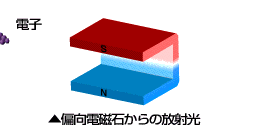 |
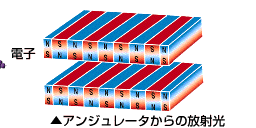 |
放射光施設とは
放射光施設とは、加速された高エネルギーの電子ビームから発生する放射光を利用して実験・研究する施設です。
利用分野と研究例
| 物質科学: | 先端材料の原子・電子の構造解析や極端条件下での材料物性や新物質創製や材料改質 |
| 生命科学/医学: | タンパク質などの生命物質の立体構造解析、例えば、生命のメカニズムの研究や医薬品開発、屈折コントラスト映像法による生体試料の高解像度イメージング |
| 環境科学: | 環境浄化用触媒の分析や生体試料中の環境汚染微量元素の分析 |
| 地球科学/宇宙科学: | 地球科学/宇宙科学:地球深部物質の構造と状態解析や隕石・宇宙塵の構造解析 |
| 産業利用: | 産業界における材料評価やタンパク質の立体構造解析 |
世界・日本の放射光施設と歴史
現在、世界には30を超える放射光施設が稼働中です。また、国内でも現在8施設が稼働中です。放射光施設の歴史は、第1世代として1940年代にシンクロトロンの誕生で放射光が初めて直接観察され、放射光の研究や利用が始まりました。次いで、第2世代として1970年代には加速器開発が進み、電子エネルギーが増大して、より波長の短いX線領域の放射光が得られるようになり、周回電子エネルギーを一定に保つ蓄積リングを利用して安定した放射光の供給化可能になりました。それにより放射光専用の加速器や実験設備が次々建設されました。1980年代以降のバイオテクノロジーやナノテクノロジーの発展で放射光の利用は急速に広まり、より高度化、多様化ニーズが増大し1990年代以降、より輝度の高い放射光を得るために高性能な蓄積リングとアンジュレータを組合せた第3世代放射光施設の建設が世界各国で始まりました。SPring-8もこの流れの中で誕生しました。
SPring-8とSACLA

SPring-8は世界の放射光科学をけん引する数々の新しいテクノロジーを開発してきました。それらを総合して作り上げたのが、全く新しいX線自由電子レーザー施設SACLAです。世界中に多数の放射光施設が建設されていますが、それらはSPring-8で作られた技術が使われています。ナノの世界を照らすSPring-8/SACLAは、単なる観察のための照明を超えて、ナノの世界が創りだす新機能の原因を解き明かす「ソリューション」を与えています。
What is Synchrotron Radiation (SR)?

Electrons travelling in a straight line at approximately the speed of light generate electromagnetic waves when their moving direction is changed by the magnetic fields. The generated electromagnetic waves are known as Synchrotron Radiation, first observed about 50 years ago with an electron synchrotron (Electron accelerator). The brightness of the synchrotron radiation depends on the electron energy. Higher energy electrons with larger changes in direction results in shorter wavelengths of radiation, such as X-rays.
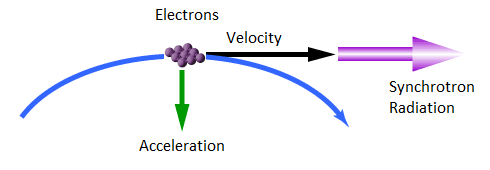
Electrons has negative charges that create a surrounding electric field, which is nothing but a virtual photon cloud. When a trajectory of high-energy electrons are bent by a magnetic field, the surrounding virtual photons are shaken off from the trajectory and emitted as real photons. This is the mechanism of the synchrotron radiation.
 |
 |
What is a Synchrotron Radiation Facility ?
A synchrotron radiation facility conducts research and experiments using synchrotron radiation generated from accelerated high-energy electron beams.
Fields of Use and Research Examples
| Material science: | Analysis of atomic and electronic structures, investigation of material properties under extreme conditions, and creation of new advanced/functional materials. |
| Life science / Medicine: | Three-dimensional structural analysis of life materials including proteins toward elucidation of the life mechanisms and drug development, and high-resolution imaging of biological samples by refractive contrast imaging. |
| Environmental science: | Analysis of catalysts for environmental purification, and analysis of contaminated trace elements in biological samples. |
| Earth Science / Astronomy: | Analysis of states and structures of deep earth materials, and structural analysis of meteorites and cosmic dust. |
| Industrial use: | Evaluation of industrial materials and three-dimensional structure analysis of proteins. |
The History of Synchrotron Radiation Facilities in Japan and the World
Currently, more than 30 synchrotron radiation facilities are in operation around the world, including 8 facilities in Japan. The history of synchrotron radiation facilities began in the 1940s when synchrotron radiation was first directly observed, which is regarded as the born of the first generation of synchrotrons. In the 1970s the second generation of accelerator development began; higher energy electrons were achievable, leading to the synchrotron radiation in shorter wavelengths even X-ray regions. Also the use of a storage ring made it possible to supply stable synchrotron radiation and keep the orbital electron energy. The success of the stable radiation triggered further development and construction of synchrotron radiation accelerators and experimental equipment. The importance of the synchrotron radiation spread rapidly with the development of biotechnology and nanotechnology in the 1980s. To meet more sophisticated and diverse needs grown up since the 1990s, the construction of third-generation synchrotron radiation facilities began in rush around the world, aiming to combine high-performance storage rings and undulators for brighter synchrotron radiation. In such situation, SPring-8 was constructed to become a flagship of the 3rd synchrotron facilities..
SPring-8 and SACLA

SPring-8 developed a number of new technologies that has made significant contribution to synchrotron radiation science around the world. These technologies realized SACLA, an X-ray Free Electron Laser Facility. SPring-8/SACLA has the ability to illuminates the nano world and also provides "solutions" to unravel the nano world.
- 詳細
- 投稿者: Super User
- カテゴリ: about
- 参照数: 21037
施設見学について
| 施設見学・記念写真 | 施設一般公開 | 情報発信施設 |

SPring-8(大型放射光施設)とSACLA(X線自由電子レーザー施設)を見学できます。
1)見学について、
・参加人数:15名以上のグループで申込みください。
・予約受付:見学希望日の3ヶ月前から10日前までです。
主催者様が申込み下さい。
・見学実施:土・日・祝祭日・ゴールデンウィーク・お盆・年末年始を除く平日
・ゴールデンウィーク (4月28、30日、5月1、2日)
・お盆 (8月12、13、14、15日)
・設立記念日 (10月27日)
・年末年始 (12月26、29、30、31日、1月2、5日)
・見学時間:午前9時30分~午後3時30分
・所要時間:約1時間30分
・見学料金:無料
2)施設内は説明員が同行して案内いたします。
・SPring-8とSACLAの概要説明
・施設紹介ビデオ視聴
・施設見学
3)注意事項
・飲酒での見学はご遠慮ください。
・敷地内は禁煙・飲食禁止です。
・発熱やインフルエンザなど症状のある方は見学をご遠慮いただきます。
※順守状況によっては見学を中止させて頂く場合があります。
見学の予約・申し込みはこちら
お弁当の手配が必要な場合はご相談下さい。
お問い合わせ
e-mail: このメールアドレスはスパムボットから保護されています。閲覧するにはJavaScriptを有効にする必要があります。
Phone: 0791-58-0909
Fax: 0791-58-2946

施設見学、記念写真
2025
| 日付 | 来場者 |
|---|---|
| 2025/02/28 | 一般社団法人綾部工業研修所 |
| 2025/02/12 | 神港学園高等学2年特進コース |
| 2025/01/24 | 姫路市立東中学校 |
| 2025/01/22 | クイーンズランド大学/大阪大学他、訪日ツアー |
| 2025/01/17 | 兵庫県立姫路西高等学校1年4・2・1組 |
| 2025/01/16 | 九州工業大学 |
| 2025/01/16 | 韓国科学教育団体 |
| 2025/01/15 | 兵庫県立姫路西高等学校1年3・5組 |
| 2025/01/10 | 兵庫県立姫路西高等学校1年6・7組 |
| 2025/01/07 | 愛媛県立三島高等学校 |
施設一般公開
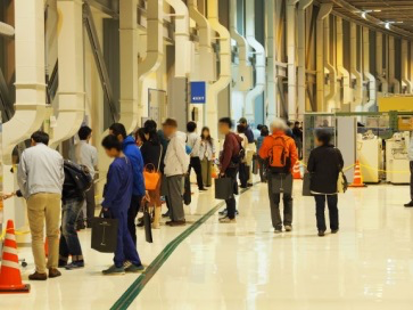
第29回(2021年)SPring-8/SACLA施設一般公開中止について
新型コロナウイルス感染症(COVID-19)の日本国内での感染拡大リスクが高まっていることから、 ご参加の皆さまおよび関係者の健康面への影響を考慮し、 予定をしておりましたSPring-8/SACLA施設公開は、中止とすることを決定いたしました。 何卒ご了承ください。
情報発信施設
オプトピア
播磨科学公園都市PR館オプトピアで、SPring-8やSACLAに関する模型やパネルを展示しています。
・開館時間:10時30分~17時00分
※ 16時30分 入館受付締切
・休館日 :毎週月曜日、12月29日~1月3日
・入場料 :無料
あいおい情報ラウンジ
JR相生駅南口前にある観光案内所に待合ラウンジ等を併設し、電車やバス、お迎えの車が来るまでの待ち時間をゆったり過ごしていただく間に、様々な情報を提供する施設です。
・開館時間:午前8時~午後7時
・休館日:無休
Facility Tour
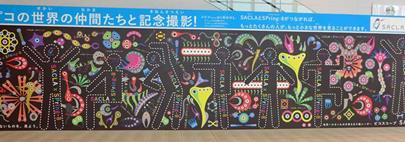
You are invited to tour the Large Synchrotron Radiation Facility, SPring-8, and the X-Ray Free Electron Laser, SACLA, both of which are located at the RIKEN Harima Campus.
1) About a tour:
-Minimum number of participants: 15
-Reservation Period: From 3 months to 10 days prior to the desired date of visit.
-Tour: Every day except Saturdays, Sundays, National Holidays, Mid-August, Year-End and New-Year Holidays (December 29 – January 3)
-Tour Hours: 9:30 a.m. to 3:30 p.m.
-Tour Duration: 1 hour and 30 minutes.
-Tour fee: Free
2) One of our friendly and knowledgeable guides will lead you through:
-An overview of SPring-8 and SACLA
-A viewing of the facility introduction video
-A facility tour
3) Notes:
-Please refrain from having alcoholic drink before visiting.
-Smoking, eating and drinking are prohibited inside the restricted area.
-If you are experiencing cold symptoms, a fever or other symptoms of illness, please refrain from visiting.
Click Here to apply to register for a tour
Contact Us:![]() このメールアドレスはスパムボットから保護されています。閲覧するにはJavaScriptを有効にする必要があります。
このメールアドレスはスパムボットから保護されています。閲覧するにはJavaScriptを有効にする必要があります。![]() 0791-58-0909
0791-58-0909![]() 0791-58-2946
0791-58-2946
Facilities Open to the Public
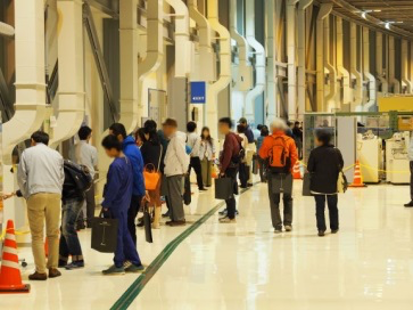
Due to the increasing risk of spreading the Coronavirus infection (COVID-19) in Japan, we have decided to cancel the planned SPring-8/SACLA facility open house in consideration of the impact on the health of all our participants and related parties. Thank you for your understanding.
Click here for the SPring-8/SACLA facility 29th open house (2021) public archive.
To get facility information
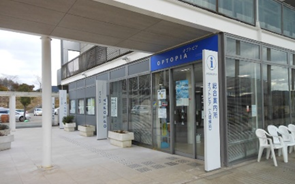
SPring-8 and SACLA project exhibitions are on display at The Optopia, which is the Harima Science Garden City PR Hall.
-Hours of Operation: 11:00 a.m. to 5:30 p.m.
-Closure Dates: Every Monday and New Years Holiday from December 29 to January 3.
-Admission: Free
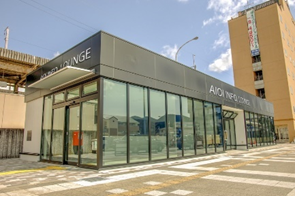
A waiting lounge is located at the Tourist Information Center in front of the south exit of the JR Aioi station. The station provides a wealth of information as well as a relaxing waiting area for transportation such as trains, buses and ride shares.
-Hours of Operation: 8:00 a.m. to 7:00 p.m.
-Closure Dates: Open every day
- 詳細
- 投稿者: Super User
- カテゴリ: about
- 参照数: 9218
よくある質問
Q1. SPring-8に関する一般的な質問
Q2. SPring-8の見学に関する質問
Q3. 放射光に関する質問
Q4. 安全性に関する質問
Q5. 電子や加速器に関する物理的な質問
Q6. 加速器や放射光発生装置に関する技術的な質問
Q7. 放射光の利用や研究成果に関する質問
Q8. SPring-8の施設に関する質問
Q9. ユーザーからよくある質問
Q1. SPring-8に関する一般的な質問
Q:SPring-8は何をする施設ですか? SPring-8では光を使って何をしているのですか?
A:加速された高エネルギー電子ビームから発生する放射光を利用して実験・研究する施設です。利用分野と 研究例は以下のようになります。
・物質科学への利用:先端材料の原子・電子の構造、極端条件下の材料物性、新物質創製、材料改質など
・生命科学・医学への利用:タンパク質などの生命物質の立体構造解析(→ 生命のメカニズムの研究、医薬品 開発など)、および屈折コントラスト映像法による生体試料の高解像 度イメージングなど
・環境科学への応用:環境浄化用触媒の分析、生体試料中の環境汚染微量元素の分析など
・地球科学・宇宙科学への利用:地球深部物質の構造と状態解析、隕石・宇宙塵の構造解析など
・産業利用:産業界における材料評価やタンパク質の立体構造解析などに活用
Q:SPring-8はどこの施設ですか?
A:国(文部科学省)の管轄下にある共用施設です。
施設者である国立研究開発法人理化学研究所が運営し、登録施設利用促進機関である公益財団法人高輝度光科学研究センターが利用者選定業務及び利用者支援業務(利用促進業務)をしています。
Q:SPring-8とはどの施設をいうのですか?
A:SPring-8 は、線型加速器・シンクロトロン・蓄積リング・ビームラインおよびそれらの付属施設を含んだ全体の総称ですが、狭い意味では蓄積リングとビームラインだけをさすこともあります。
Q:SPring-8やSACLAでは何人くらい働いているのですか。
A:2019年10月現在で、SPring-8とSACLAを併せておよそ440名の職員が働いています。
このほかSPring-8サイト内では、サイト内の他の施設・機関(ニュースバル放射光施設、兵庫県放射光ナノテク研究所、日本原子力研究開発機構、量子科学技術研究開発機構)の職員や、専用ビームラインの職員なども働いています。また、各施設が稼働している期間中は、毎日250人ほどの利用者(ユーザー)が実験しています。
Q:どんな人、グループがSPring-8を利用しているのですか? 外国の利用者もありますか?
A:国内の国公私立大学・研究機関・民間企業および海外の研究所・大学などの研究者です。
Q:使用の申し込みはどうすればよいのですか?
A:毎年2回、研究課題を募集しますので、それに応募していただく必要があります。詳しくは こちらをご覧ください。
Q:SPring-8の使用料はどれくらいですか?
A:実験終了後、研究成果を公開する場合は使用料は無料です。成果を公開しない場合には、1時間あたり6万円(48万円/8時間)の使用料が必要となります。詳しくは こちらをご覧ください。
Q:SPring-8の名前の意味は何ですか?
A:SPring-8(スプリング・エイトと呼んでいます)は、「スーパー(超=超高性能の)フォトン(光子=光の粒)リング(輪=円形加速器=蓄積リング)80億電子ボルト(=8ギガ電子ボルト)」を意味する英語 Super Photon ring 8GeV からつけられた愛称です。施設の正式名称は「大型放射光施設」といい、「大型放射光施設(SPring-8)」と表記します。
Q:SPring-8の建設費はいくらですか?
A:当初の建設費は約1,100億円です。用地は兵庫県よりご提供いただきました。
Q:SPring-8とSACLAの年間予算(運営費)はどれくらいですか?
A:2018年度のSPring-8およびSACLAの施設運転・維持管理等に係る予算はそれぞれおよそ85億円および56億円、また利用者選定・利用支援等に係る予算は、およそ14億円です。
なお、後者の利用者選定・利用支援等に必要な予算はSPring-8とSACLA、両方の利用促進に使用されます。
Q:運転時間帯はどうなっていますか?
A:SPring-8の運転スケジュールは、約2〜3週間の連続運転期間で構成されています。サイクル間の停止や夏期・冬期の長期点検調整期間など以外は、基本的に24時間連続運転をして実験等を行っています。
Q:SPring-8では何を作っているのですか?
A:SPring-8は分析や解析などをする実験施設であって製造施設ではないので物の製造は行っていません。
たとえば、創薬産業ビームラインでは、医薬品を開発するのに必要な蛋白質の構造解析を行っていますが、医薬品そのものをここで製造しているわけではありません。
Q:県立粒子線医療センターはSPring-8の光を利用していますか?
A:粒子線医療センターは独立した機関であり、SPring-8の光は使っていません。粒子線医療センターは光でなく粒子線(陽子線、炭素線)を利用してガンなどの治療をします。
Q:隕石らしきものを持っていますが鑑定してもらえますか?
A:現在のSPring-8の利用システムでは、個人のコレクションの鑑定を行うことは難しいと思います。将来、委託分析サービスシステムが設置されれば可能になるかもしれません。
Q:“ヒッグス粒子”の発見を発表したLHCという施設とSPring-8とは何が違うのですか?SPring-8でも同様の実験は出来ますか?
A:LHCとSPring-8は、どちらも加速器 *1を使った施設ですが、加速する粒子も、施設の利用目的も異なります。
SPring-8は放射光施設であり、加速した電子を磁石で曲げることによって発生するシンクロトロン放射光(以下、「放射光」という)を利用する施設です。
この放射光を用いると、物質の構造や働き、材料の組成を原子レベルで(ナノの世界を)観察、計測、解析できることから、広く学術分野や産業分野での研究開発のために利用されています。
一方、LHC(Large Hadron Collider;大型ハドロン衝突型加速器の略称)は、陽子(ハドロンの一種)を加速し、正面衝突させることによって、その時に起こる反応(現象)を調べることができる施設です。
この施設では、今回話題となった“ヒッグス粒子”の発見など素粒子(物質のこれ以上分割できない最小単位で、クオーク、電子、ニュートリノ、光子など)の研究が行われています。
ただし、SPring-8にも素粒子の研究を目的としたビームラインがあります。大阪大学が整備したレーザー電子光ビームラインでは、紫外線のレーザーをSPring-8の加速電子に正面衝突させて跳ね返ってくる極めてエネルギーが高く、波長の短い光(ガンマ線)を用いて、主にクオークの研究 *2を行っています。
*1 電子や陽子など電気を帯びた粒子を電場や磁場を用いて加速・制御し、高速の(高い運動エネルギーを持った)粒子を発生する装置。
SPring-8では、電子を80億電子ボルト(速度は光の速度の99.9999998%に相当)にまで加速し、これを蓄積リングと称する周長約1.5kmの装置に導き放射光を発生させます。
一方、LHCは、電子より約1,800倍重い陽子を7兆電子ボルト(速度は光速の99.9999991%に相当)にまで加速するため、スイスとフランスの国境を跨ぐ周長27 kmにも及ぶ地下100mに設置された巨大な装置になっています。
この周上4か所に巨大な検出器が設置され、素粒子反応の観測など高エネルギー物理実験が行われています。
*2 2003年7月、米物理学会速報誌“ Physical Review Letters”に発表した「5クオークの発見」は、本ビームラインを用いた研究における特筆すべき成果です。
陽子や中性子は3つのクオークからできていますが、理論的に予言されていた4個以上のクオークから成る粒子を実験的に世界で初めて示しました。
Q2. SPring-8の見学に関する質問
Q:蓄積リング棟の中を見学したいのですが?
A:施設見学のページにて、見学についてご案内しています。実験ホールの一部をガラス越しに見学できるコースもございますので、詳細を同ページよりご確認の上、見学申込フォームよりお申し込みください。
Q:放射光普及棟(展示室)はいつできたのですか?
A:2000年(平成12年)4月16日にオープンしました。
2004年(平成16年)3月には、SOR-RINGが放射光普及棟に展示されました。
SOR-RINGについて
SOR-RINGは、世界で最初に建設(1974年完成)された放射光専用の電子蓄積リング(第二世代の放射光施設として分類される)です。
東京大学物性研究所の軌道放射物性研究施設として、東京都田無市(現在の西東京市)の東京大学原子核研究所(当時)内に設置され、世界の放射光科学の発展に多大な貢献をしましたが、1997年に惜しまれつつその役目を終えました。
同年、第三世代の大型放射光施設(SPring-8)が完成し稼働し始めましたので、1997年は、日本における放射光施設の世代交代の年とも言えます。
その後、SOR-RINGは当時の姿を保ったままSPring-8に移設され、放射光普及棟の一角に展示されました。
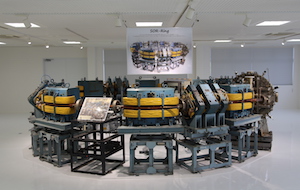
放射光普及棟に展示されたSOR-RING
Q3. 放射光に関する質問
Q:放射光と放射線・放射能の違いは何ですか?
A:放射線は物理学的には、X線、α線などのすべての電磁波と粒子線を含みますが、法律で定められた「放射線」は、X線、α線、β線、γ線、中性子線、電子線、重粒子線などの電離放射線(直接または間接に電離作用のあるもの)をさし、電波、赤外線、可視光線、紫外線は含まれていません。
放射光とは、高エネルギーの電子などの荷電粒子が磁場で曲げられたときに発生する電磁波(シンクロトロン放射光)であり、これには赤外線、可視光線、紫外線、X線があります。つまり、このようなシンクロトロン放射原理で発生した電磁波を表す呼び名です。
放射能という言葉は、(1)α線、β線、およびγ線などの放射線を放出する性質、(2)そうした性質の強さ、(3)そうした性質を持つ物質(放射性物質)のことを意味しますので、放射光とは全く無関係です。
Q:放射光とレーザー光線の違いは何ですか?
A:どちらも指向性の強い光(電磁波)です。
放射光は白色光(すべての波長を含んだ電磁波)または準単色光で、分光器と組み合わせることによって、赤外線からX線領域までの広い領域にわたって波長可変の高輝度単色光源として利用できます。
レーザーは単色で位相のそろった光線で、ピークパワーが大きく分光器を使わずに単色光を取り出せます。しかし、波長領域が遠赤外線から真空紫外線に限られており、X線領域のレーザーは現在のところ開発段階にあります。
Q:放射光はどんな色をしているのですか?
A:光のうち目に見えるのは可視光の部分のみですが、放射光にはすべての色の光(可視光)が混ざっているので、放射光は白色光として見えます。
X線を利用するためのビームラインでは、途中に可視光を通さないフィルターやベリリウムでできた窓(真空隔壁)が入っているため、放射光を直接見ることはできません。
しかし、フィルターや窓のない軟X線や赤外線のビームラインでは直接放射光(の可視光部分)を見ることができます。
Q:偏向電磁石での発生直後の放射光はどんな形状をしていますか?
A:放射光は、雨傘を回したときに傘の縁から飛び出す水滴のように、扇状に広がって偏向電磁石から出てきます。
一つの偏向電磁石から出てくる放射光の横方向の広がりは、その偏向電磁石の長さで決まります(SPring-8の偏向電磁石の場合、広がり角度は4.04度)。
なお、縦方向の広がりは、蓄積リングを走る電子ビームのエネルギー、偏向電磁石の磁場の強さ、および出てくる放射光のエネルギーで決まります(SPring-8の偏向電磁石の場合、28.9 keV のエネルギーのX線に対して、広がり角度は0.0036度、62.5マイクロラジアン)。
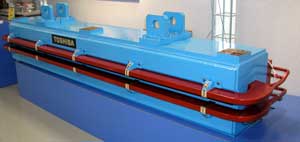
展示室に展示されている偏向電磁石
Q:放射光の位相はそろっていますか?
A:放射光は白色光(すべての波長を含んだ電磁波)または準単色光ですが、位相はそろっていません。
Q:光は波なのですか、粒子なのですか?
A:光は波(電磁波)ですが、物質との相互作用のしかたで粒子的な性質が出ることもあります。一般に、波長が長いと波の性質、波長が短いと粒子的な性質が強く現れます。
Q4. 安全性に関する質問
Q:放射光は放射線のように人体に対する危険性(影響)は無いのですか?
A:放射光は、ある特定の方法で発生させた放射線(赤外線、可視光線、紫外線、X線)(*)ですので、過剰に曝露すれば他の放射線と同様の影響(赤外線では火傷、可視光線では視力障害、紫外線やX線では皮膚傷害など)が起こります。
(*)広い意味での放射線はすべての電磁波と粒子線を含みますが、狭い意味での放射線はX線、α線、β線、γ線、中性子線、電子線、重粒子線、宇宙線などの電離放射線(電離作用のある放射線)をさします。
Q:放射線安全管理は行われているのですか?
A:放射線の取り扱いに関しては、法令で厳しく規制されています。
SPring-8では安全性に余裕をみて放射線しゃへい設計を行うとともに、安全管理室に専任の放射線管理チームを置き、法令の限度基準を十分下回るよう厳重に放射線安全管理を行っています。
Q:強磁場での人体への影響はないのですか?
A:強い静磁場が、心臓ペースメーカーや手術クリップなどの装着者に不具合を与える可能性のあることは分かっています。
また、強い交流磁場が火傷などの原因となることも分かっています。しかし、磁場が健康に及ぼす影響について詳しいことはまだよく分っていません。
Q:宇宙線は人体に影響はないのですか? 害はないのですか?
A:地球は地磁気によって宇宙線から護られている上、地球の大気は厚さ10mの水の壁に相当する遮蔽能力があるので、地上まで到達する宇宙線の強度は非常に弱く、健康への影響はありません。
地球上の生物は、最初の単細胞生物のときから、弱い宇宙線などに曝され続けて進化してきました。もし、弱い放射線にさえ耐えられない生物がいたとすれば、その生物は進化の過程で生き残れなかったはずです。
なお、大気圏の外に出ると宇宙線の強度ははるかに強くなり、スペースシャトルの中では、1日で地上の1年分以上の宇宙線に曝されることになります。
Q5. 電子や加速器に関する物理的な質問
Q:電子とはどんなものですか?
A:電子は原子を構成している基本粒子の一つで、原子核の周りを回っている負の電荷をもつ粒子です。
液晶テレビより以前に普及したテレビのブラウン管の中で走って画面を光らせているのも電子です。また、電流は金属中を電子が動くことにより生じます。
Q:電子はどんな色をしていますか?
A:物質(ただし、それ自身が発光しない物質)の色は、可視光線の内どの波長の光を反射あるいは吸収するかによって決まります。電子のサイズは極めて小さく、可視光線で電子そのものを直接見ることは原理的にできないので、電子に色はありません。
しかし、電子が蛍光板などの物質に当たったときに発生する光を見ることはできます(ただし、これは電子が出す光ではなく、蛍光物質が発する光です)。
Q:電子ボルトとは何ですか?
A:エネルギーの単位の一つ。1ボルトの電圧がかかっている電極の間を電子が移動したときの電子の運動エネルギーの増加量(=1.602×10 -19ジュール)を1電子ボルト(1eV)といいます。
Q:どのようにして電子を加速するのですか? 電子の流れ、速度はどうやって制御しているのですか?
A:真空中で物質の温度を上げて熱電子を発生させ、静電場や高周波電場を用いて加速し、磁場を用いて軌道を曲げたり、レンズのように集束作用を行わせたりします。
Q:マイクロ波(極超短波)とは何ですか?
A:マイクロ波(極超短波)とは、波長が1ミリメートル程度から1メートル程度までの電磁波をいいます。
マイクロ波は、波長の短い方から順に、サブミリメートル波、ミリメートル波(EHF)、センチメートル波(SHF)、デシメートル波(UHF)、に分けられます。
家庭で使う電子レンジは10センチメートル程度の波長のマイクロ波を発生させて、レンジの中に置かれた食品に含まれる水の分子などを振動させその摩擦熱で食品を暖めます。
Q:蓄積リングを周回する電子は何に使うのですか?
A:蓄積リングを周回する電子の軌道を磁石で曲げて放射光を発生させます。電子ビームは放射光を発生させるために使います。
Q:蓄積リングを周回する電子の最後はどうなるのですか?
A:電子は放射光を出すことにより運動エネルギーを失うので、高周波加速装置を切ると電子ビームの軌道半径が小さくなっていき、電子は真空チェンバー壁またはダンパーとよばれる金属板に衝突します。
電子は物質に当たると、もっていた運動エネルギーを失い止まってしまいます。その運動エネルギーは熱に変わります。
Q:真空チェンバー内の電子の通路断面はなぜ楕円形なのですか?
A:電子ビームの断面の形状は場所によって異なりますが、平均的には楕円形をしています。真空チェンバーの電子の通路断面は、電子ビームの断面の形状に相似な形になるように設計されたので楕円形になりました。
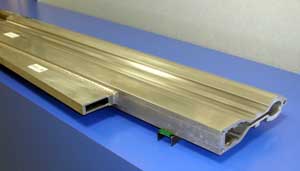
展示室に展示されている直線部の真空チェンバー
A:電子エネルギーと偏向度より電子ビームの曲率半径を決定します。電子のエネルギーが高いほど短波長(高エネルギー)の放射光が得られますが、電子のエネルギーが高くなると周長の長い蓄積リングが必要となります。また、周長が長いほど電子ビームを細く絞ることができるので、輝度の高い放射光が得られます。したがって、高輝度・高エネルギーの放射光を得るためには、周長の長い蓄積リングが必要となりますが、その長さは建設費との兼ね合いで決まります。
Q:電子の打ち込み頻度はどれくらいですか?(当初のSpring-8)
A:電子の打ち込みの頻度は運転条件により異なりますが、SPring-8では基本的には1日1回(24時間に1回)あるいは1日2回(12時間に1回)です。
1回当たりの電子の打ち込み数は、約1秒間隔で数100回程度となっています。しかし、2004年6月からはトップアップ運転が始まり、1分ごとあるいは5分ごとに1〜3回程度の入射となっています。
Q6.加速器や放射光発生装置に関する技術的な質問
Q:電子銃の電子発射部は何でできているのですか?(当初のSPring-8)
A:SPring-8ではバリウム含浸型タングステンを使用しています。
Q:電子ビームの通路となる真空チェンバーの材質は何ですか、また、どのようにして作るのですか?
A:材質はアルミ合金で、押し出し法(ところてん方式)で製作されています。一部ステンレスの部分もあります。
Q:真空チェンバーはなぜアルミ合金なのですか? 他の金属(ステンレス)ではいけないのですか?
A:アルミ合金は、(a)非磁性体金属であり、(b)真空特性が良く(高い真空度を保持できる)、(c)放射化特性が良く(高エネルギー電子によって原子が放射化されても長期間にわたって放射線を出す放射性元素ができにくい)、(d)加工特性が良いので安価に精度良く作れる、ため真空チェンバーの材料として適しています。
一方、ステンレスも真空チェンバーの材料として使用可能ですが、ステンレスの場合は押し出し法による加工が困難であるため、製造方法・製造コストがアルミ合金の場合とは異なってきます。
Q:すべて国内の技術ですか?
A:加速器に関してはほとんどが国産技術です。
Q:アンジュレータの磁石の磁束密度は何ガウスですか?
A:磁石表面では最大14,000ガウス程度ですが、電子ビームが通過する場所では数1,000ガウスです。アンジュレータごとに、また磁石間隙によって磁束密度はそれぞれ異なります。
家庭でよく見掛ける磁石で強力なものとしては、磁気健康ネックレスなどに用いられている磁石が挙げられます。この磁石は概ね800ガウスから1800ガウス程度の磁場で、アンジュレータ用磁石の1/10程度です。クリップ代わりとして冷蔵庫の壁などでよく使われる磁石は、さらにその数分の1程度の強さしかありません。
Q:アンジュレータの磁石の成分は何ですか?
A:ネオジム、鉄、ホウ素(ボロン)を主成分とする異方性焼結磁石で、現在世界最強の永久磁石です。この磁石は磁力が強いだけでなく、高温環境にさらしても特性が悪くなりません。
SPring-8では真空封止型アンジュレータ(電子ビームが周回する超高真空中に磁石を入れるタイプのアンジュレータ)を数多く使っています。
一般に、真空中に入れられた物体から出てくるガスが真空度を下げるので、超高真空を達成するためには、あらかじめ高い温度にしてガスを取り除いてやる必要があります。従来の磁石では、温度を上げると磁気特性が悪くなってしまうため、真空封止型アンジュレータを作ることは困難でしたが、ネオジム-鉄-ボロン磁石を使うことで実現されました。
この磁石は日本で開発されました。強力な磁石の発見の歴史には日本人の名前がたくさん出てきます。日本は磁石の研究では世界の最先端を走っていて、当然ながらSPring-8でも磁性(物質のもつ磁石としての性質)の研究が日夜続けられています。
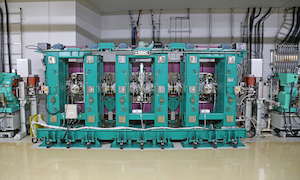
アンジュレータ
Q:偏向電磁石の励磁はAC(交流)ですかDC(直流)ですか?
A:蓄積リングの電子ビームのエネルギーは一定なので、偏向電磁石に流す電流はDC(直流)です。1,200アンペアの直流で7,000ガウスの磁場を作ります。
Q:故障はどんなものでその頻度はどれくらいですか?
A:2016年度の蓄積リング総運転時間(4,941時間)のうち、ユーザーの利用時間として計画されていた時間は合計4,152時間でした。これに対し、機器の故障などによりユーザーが利用出来なかった時間(ダウンタイム)は合計23時間で、その他、運転モードの切り替え時間等も差し引いた実際の利用時間は4,125時間でした。
従って、ユーザータイム全体に対するダウンタイムは0.6%弱で、全体的に安定した利用運転を行いました。0.6%弱のダウンタイムの原因となったものとしては、ハイパワー高周波系機器内の放電や電磁石用冷却ホースの漏水といった機器故障に加え、地震や電力供給側の瞬時電圧低下といった環境に依るものもありました。
Q7. 放射光の利用や研究成果に関する質問
Q:和歌山毒物カレー事件の砒素分析はどのビームラインで、どの様に行われたかのでしょうか?
A:和歌山地方検察庁を通じた最初の測定は、高エネルギー非弾性散乱ビームラインBL08Wで行われました。和歌山地裁から依頼された2回目の測定は、BL08Wと磁性材料ビームライン(当時の名称は生体分析ビームライン)BL39XUを使って行われました。
いずれの測定も、放射光を使った蛍光X線分析という方法で行われました。物質にX線を照射すると元素固有のX線が発生するので、そのX線の種類(エネルギーまたは波長)と量を測定することにより、物質に含まれる元素の種類と量を知ることができます(蛍光X線分析法)。しかも、微量に含まれる元素を検出できることがこの方法の特徴です。
和歌山毒物カレー事件の場合は、亜砒酸に含まれる特定の不純物元素の量を比較して亜砒酸の異同識別をしました。また、この方法により、素材の産地を特定することもできます。
SPring-8のX線を使うと今まで出来なかった重元素の分析ができるのですが、この特徴が亜砒酸 の異同識別を可能にしました。というのは、アンチモン(Sb)やビスマス(Bi)のような重元素不純物を検出する必要があったからです。
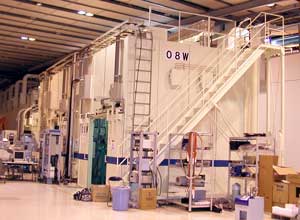
高エネルギー非弾性散乱ビームライン
BL08Wの実験ハッチ
Q:実用化の例はありますか? SPring-8で実生活に役立つ実用化の例は何ですか?
A:基本的には物質を原子や電子のレベルで見る実験施設なので基礎研究に役立ちますが、実生活に役立った例はたくさん出ています。
リチウム電池の充電特性の劣化の原因を突き止めることによって長寿命化に貢献しました。
半導体素子の原子間隔を直接観察することにより、光半導体素子の発振効率をよくしたり、生産の歩留まりを改善したりできた例もあります。
劣化しない自動車排気ガス浄化触媒の働きを原子のレベルで確認することにより実用化に役立ちました(詳細については、「 SPring-8産業利用成果パンフレット」をご覧ください)。
また、タンパク質の構造解析は新しい医薬品の開発につながることが期待されています。
Q:考古学研究にも利用されていると聞きましたがどのようにするのですか?
A:SPring-8ではこれまでに、古代陶器、古陶磁器(片)、仏像、鉄器、青銅鏡などの考古遺物と呼ばれるものについて、蛍光X線分析という方法を用いて分析を行っています。
物質にX線を照射すると物質から元素固有のX線が発生するので、そのX線の種類(エネルギーまたは波長)と量を測定することにより、物質に含まれる元素の種この方法は、分析する物体(試料)を非破壊で測定することができるため、破壊したり化学的処理を加えたりすることが許されない貴重な遺物の分析を行うことができます。類と量を知ることができます(蛍光X線分析法)。
これらの考古遺物に含まれる微量元素の割合から、遺物の産地や輸送経路の推定ができます。また、遺物の製法の推定にも利用されています。
このような研究は、日本では文化科学としてのみ扱われてきた分野に、科学的な研究手法を導入する役割をも担っています。
Q:タンパク質構造解析のためのタンパク質サンプルの大きさはどれくらいですか?
A:SPring-8のX線ビームは輝度が高い上に細く絞ることができるので、サンプルが小さくても測定が可能です。
タンパク質試料としては、通常は1辺が50~100ミクロン程度の大きさの結晶を用いています。3ミクロン程度の結晶で構造解析を行った例もあります。

理研ターゲットタンパクビームラインBL32XUで高分解能解析に用いられた細胞内で合成された多角体結晶
(サイズはおよそ3μm)
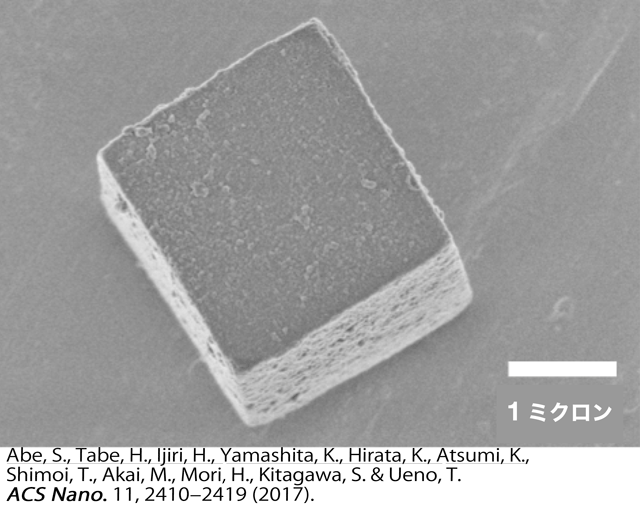
構造生物学ⅠビームラインBL41XUのタンパク質結晶構造解析用実験装置
Q:ヒトゲノム計画に参加しているのですか?
A:理化学研究所(理研)はヒトゲノム計画(人の遺伝子の塩基配列を決める計画)に関係していますが、SPring-8としては参加していません。
ただし、SPring-8は構造ゲノム計画(遺伝子の作り出すタンパク質の立体構造を調べる計画)には参加しています。現在、蛋白質立体構造解析用の共用ビームラインは3本あり,これらのビームラインのビームタイムの30%は構造ゲノム計画のために使用されています。
また,理研は構造ゲノム研究専用のビームラインを2本持っています。全国の研究者がこれらのビームラインを使って24時間測定を行っています。
Q:タンパク質の結晶にX線を照射して構造解析するとき、タンパク質の結晶は壊れないのですか?
A:タンパク質の構造解析はタンパク質の結晶を作製することから始まります。その結晶にX線を照射し、X線回折という現象を利用して構造解析を行います。
タンパク質の結晶は、ダイヤモンドや塩のように硬い結晶ではなく、水分子を多量に含み豆腐のような柔らかさをもった結晶です。
X線を照射すると水分子がイオン化され、そのイオンが周囲の水分子と反応して水和ラジカルが生成されます。この水和ラジカルはタンパク質の結合を壊します。したがって、X線を照射し続けるとタンパク質の結晶は少しずつ壊れていきます(放射線損傷)。
しかし、タンパク質の結晶は数十億個という膨大な数のタンパク質を含んでいるので、結晶の破壊が測定データに影響を及ぼすまでには、ある程度の時間がかかります。この時間内に構造解析に必要なX線回折データを収集してしまいます。
つまり、タンパク質の構造解析は結晶の破壊との競争ということになります。当然のことながら、結晶の破壊を遅らせる工夫が必要です。タンパク質結晶を凍結させ、低温窒素ガスを結晶に吹きかけながら測定を行います。
Q8. SPring-8の施設に関する質問
Q:SPring-8の受電電圧はいくらですか? また、変電設備はどこにありますか?
A:SPring-8正門前に特別高圧開閉所があり、関西電力テクノポリス変電所から77,000ボルトで2回線受電をしています。
開閉所から構内の特別高圧第一変電所(蓄積リング)、特別高圧第二変電所(入射系・線型加速器・シンクロトロン)、特別高圧第三変電所(組立調整実験棟・構造生物学研究棟・ニュースバル棟及びX線自由電子レーザー施設など)に77,000ボルトで配電し、さらに、各特別高圧変電所において77,000ボルトから6,600ボルトに変圧した後、需要場所ごとに設置されている高圧変電所に給電しています。
実際に使用される電力は、高圧変電所内において、6,600ボルトから400ボルト(動力用)・200ボルト(照明用等)・100ボルト(コンセント用)に変圧されて各需要場所に送られます。
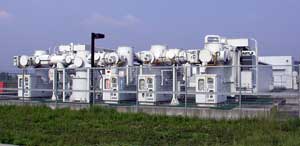
特別高圧第三変電所
Q:SPring-8の敷地の広さはどれくらいですか?
A:SPring-8の敷地面積は141ヘクタール(1,410,000平方メートル)です。甲子園球場の約36倍、東京ドーム球場の約30倍、東京ディズニーランドのテーマパークエリアの約2.8倍になります。
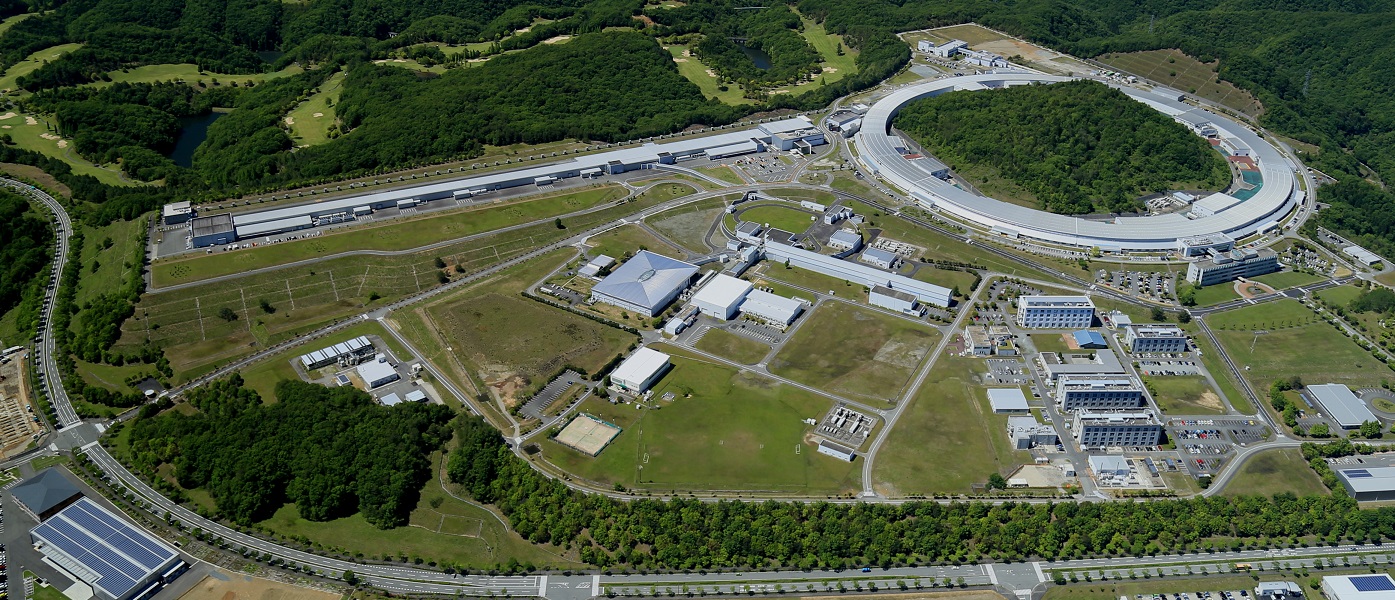
全景(航空写真)
Q9. ユーザーからよくある質問
Q:SPring-8が長期間停止する理由は?
A:SPring-8では、夏期、冬期、年度末にそれぞれ1.5〜2ヶ月、1ヶ月間程度の点検調整期間を設定しています。
これらの期間は、SPring-8 施設の維持、法律で定められた受電設備の点検、ビーム性能の高度化を実現する加速器システムおよびビームラインの改善等のために設定しています。
夏期に長期の定期点検期間を設定している主な理由は、経済合理性の観点から電気代単価が割り増しになる7月〜9月において出来るだけ運転を控えることがもっとも効果的と判断されることにあります。
Frequently Asked Questions
Q1. General Questions about SPring-8
Q2. Questions about site tours of SPring-8
Q3. Questions about Synchrotron Radiation
Q4. Questions about Safety
Q5. Questions about the Physical Properties of Electrons and Accelerators
Q6. Questions about Technical Information Regarding Accelerators and Synchrotron Radiation Generating Devices
Q7. Questions about the SPring-8 Facilities
Q8. Questions about the SPring-8 Facilities
Q9. Frequently Asked Questions from Users
Q1. General Questions about SPring-8
Q:What type of facility is SPring-8? What types of experiments are carried out using synchrotron light at SPring-8?
A:This facility conducts research and experiments using synchrotron radiation generated from accelerated high-energy electron beams. The variety of fields and research examples include:
・Application for Material Science: Atoms of advanced materials/ Structure of electrons, material properties under extreme conditions, creation of new substances, and material modification.
・Application for Life Science / Medicine: Three-dimensional structure analysis of life materials such as proteins (→ research on the mechanisms of life, pharmaceutical development, etc), high-resolution imaging of biological samples by refraction contrast imaging, etc.
・Application for Environmental Science: Analysis of catalysts for environmental purification and analysis of contaminated trace elements in biological samples.
・Application for Earth Science and Astronomy: Analysis of structure and state of deep earth materials and structural analysis of meteorites and cosmic dust.
・Application for Industrial Use: Material evaluation in industry and three-dimensional structure analysis of proteins.
Q:Who Does SPring-8 Belong To?
A:This is a shared facility under the jurisdiction of the National Government, MEXT (Ministry of Education, Culture, Sports, Science and Technology). Owned by the National Research and Development Institute, RIKEN, with management and operation lead by The Japan Synchrotron Radiation Research Institute (JASRI).
Q:Which Facility is Called SPring-8?
A:SPring-8 is a general term for the entire device, including the linear accelerator, the synchrotron, the storage ring and the beamlines, but in a narrow sense, it is commonly only used for the storage ring and beamlines.
Q:How Many People Work at SPring-8 and SACLA?
A:As of October 2019, approximately 440 employees are working at SPring-8 and SACLA. In addition to that, other facilities and institutions (including NewSUBARU, Hyogo-Prefectural Synchrotron Radiation Nanotechnology Laboratory, Japan Atomic Energy gency, The National Institutes for Quantum and Radiological Science and Technology) have staff working on contract beamlines at the SPring-8 Campus. As well as staff, when all facilities are up and running, approximately 250 users conduct experiments each day.
Q:Who are the users of the SPring-8 facility? Are there any foreign users?
A:SPring-8 users include national, public and private universities, research institutes and companies within Japan, as well as universities and research institutes from overseas.
Q:How do I apply to use SPring-8?
A:Twice a year, we accept research proposals to use the facilities. For more details, please click here.
Q:How much does it cost to use SPring-8?
A:If you publish your research results after the experiment is complete, there is no charge for the use of the facilities. If you do not disclose your results, there is a fee of 60,000 yen per hour (480,000 yen / 8 hours) for beam use. For more details, please click here.
Q:What does the name SPring-8 mean?
A:SPring-8 is the acronym for the Super (super = ultra-high performance) Photon (photon = light particle) Ring (ring = circular accelerator = storage ring) 8GeV (8 giga electron volts = 8 billion electron volts).The formal name of the facility is “The Large-Scale Synchrotron Radiation Facility”and it is written as“The Large-Scale Synchrotron Radiation Facility (SPring-8)”.
Q:How Much Did it Cost to Construct SPring-8?
A:The initial construction cost was approximately 110 billion yen, and the site was donated by the Hyogo Prefecture.
Q:What is the annual operating budget for SPring-8 and SACLA?
A:For the 2018 fiscal year, the budget for facility operation and maintenance of SPring-8 was approximately 8.5 billion yen, and SACLA was approximately 5.6 billion yen. The budget for promotion of use was approximately 1.4 billion yen. The budget required for promotion of use is to support user selection and user support for both SPring-8 and SACLA.
Q:What is the operation schedule of SPring-8?
A:SPring-8’s operating schedule consists of continuous operation in runs of 2-3 weeks, where the facilities are run 24 hours a day. Operation is stopped between cycles as well as for long-term inspection adjustment periods during the summer and winter seasons.
Q:What is produced at SPring-8?
A:SPring-8 is an experimental facility for analysis, and is not a manufacturer, so no production takes place at the facility. For example, structural analysis of proteins for drug development is performed at the Pharmaceutical Industry Beamline, but the drugs are not developed at SPring-8.
Q:Does Hyogo Ion Beam Medical Center use the synchrotron radiation from SPring-8?
A:The Hyogo Ion Beam Medical Center is an independent organization, and they do not use the synchrotron radiation produced by SPring-8. The Hyogo Ion Beam Medical Center uses ion beams (proton beams, carbon-ion beams) to treat cancerous tumors.
Q:Is it possible to identify a meteorite-like stone that I have?
A:Right now, with the way SPring-8 is used, it would be exceedingly difficult to identify objects from personal collections. In the future, it may be possible if a contract analysis service becomes available.
Q:What is the difference between the LHC (Large Hadron Collider) facility that announced the discovery of the "Higgs boson" and SPring-8? Is it possible to do the same experiment with SPring-8?
A:Both LHC and SPring-8 are accelerator*1 based facilities, but the types of particles accelerated and the purpose of the facilities are distinctly different.
SPring-8 is a synchrotron radiation facility in which synchrotron radiation (hereby referred to as“SR”)is generated by an accelerated beam of electrons being bent under the influence of magnets. SR is widely used for research and development in both academic and industrial fields due to the ability to observe, measure and analyze the structure and composition of materials at the atomic level.
On the other hand, the LHC, is a facility that accelerates protons (a type of hadron) for head-on collisions to investigate the reactions that are triggered by the collision. At The LHC, elementary particles (such as quarks, electrons, neutrinos and photons) are studied. This led to the discovery of the“Higgs Boson”,which was a huge scientific discovery.
However, SPring-8 also has beamlines to study elementary particles. The Laser Electron Photon Beam developed by Osaka University is mainly used for quark *2 research, where electrons accelerated by SPring-8 are collided with an ultraviolet laser, producing extremely high energy and short wavelength recoiled photons (gamma rays).
Accelerator *1
A device that accelerates electrically charged particles, such as electrons and protons, using electric and magnetic fields to generate high-speed (high kinetic energy) particles. At SPring-8, electrons are capable of being accelerated to an energy of 8Gev (8 billion electron volts) which is a velocity equivalent of 99.9999998% the speed of light. The electrons are then guided to the storage ring, with a circumference of approximately 1.5 km, where synchrotron radiation is generated. The LHC, on the other hand, accelerates protons (which are about 1,800 times heavier than electrons), up to 7 trillion electron volts, which is a velocity equivalent of 99.9999991% the speed of light. The LHC has a much larger facility, with a storage ring circumference of 27km that lies 100m underground across the Swiss-French border.
Quarks*2
The discovery of a pentaquark, published in July 2003 in the "Physical Review Letters”, which is a collection of brief reports published in The Bulletin of the American Physical Society, is a remarkable achievement in research using this beamline. With protons and neutrons consisting of three quarks, the existence of elementary particles consisting of four or more quarks had been theoretically predicted, but this was the first experimental confirmation of such a particle existing.
Q2. Questions about site tours of SPring-8
Q:Can I visit the storage ring?
A:On the facility tour page, you will find information and resources about the tour. During the tour, you are able to see part of the experiment hall through a glass window, so please check the detailed page and apply with the tour application form.
Q:When was the Public Relations Center built?
A:The Public Relations Center opened on April 12, 2000. The SOR-RING has been exhibited in the Public Relations Center Building since March 16, 2004.
About the SOR-RING,
The SOR-RING is the world’s first electron storage ring (Classified as a second-generation synchrotron radiation facility) dedicated to synchrotron radiation, built in 1974. It was located at the Institute for Nuclear Study (INS) at the University of Tokyo, as a research facility of the Institute for Solid State Physics in the Synchrotron Radiation Laboratory (SRL ISSP). It contributed greatly to the advancement of synchrotron radiation science, but was retired in 1997. During that same year, the third-generation synchrotron radiation facility (SPring-8) was constructed and began operation. 1997 can be considered the year of generational change for synchrotron radiation facilities within Japan. After that, SOR-RING was relocated to the SPring-8 facility and placed on display in the Public Relations Center.
|
The SOR-RING exhibition in the Public Relations Center |
Q3. Questions about synchrotron radiation
Q:What is the difference between synchrotron radiation, radiation and radioactivity?
A:In physics, radiation refers to all electromagnetic waves and particle beams (such as X-rays, α-rays, β-rays, γ-rays, neutron beams, electron beams and ion beams). In a narrow sense, radiation refers only to ionizing radiation (direct or indirect ionization), which means radio waves, infrared rays, visible light and ultraviolet rays are not included. Synchrotron radiation is comprised of electromagnetic waves (including infrared, visible, ultraviolet and X-rays) which are generated when charged particles, such as high-energy electrons, are bent under the influence of a magnetic field. Synchrotron radiation represents electromagnetic waves generated under such principles and is distinguished from other types of radiation by it’s origins. Radioactivity means (1) the property of emitting radiation such as α-rays, β-rays and γ-rays, (2) the strength of such properties and (3) substances with such properties (radioactive materials). The term radioactivity is independent of synchrotron radiation.
Q:What is the difference between synchrotron radiation and a laser beam?
A:Both synchrotron radiation and laser beams are brilliant, highly directional light (electromagnetic waves). Synchrotron radiation is comprised of quasi-monochromatic or white light (electromagnetic waves that contain all wavelengths), which can be tuned to a high-intensity monochromatic, single wavelength source over a wide spectrum of light from infrared rays to X-rays. A laser beam is monochromatic, coherent light with a large peak intensity that does not require the tuning that synchrotron radiation requires. However, the wavelength range is limited from infrared rays to vacuum ultraviolet, as X-rays lasers are still in the developmental stage.
Q:What color is synchrotron radiation?
A:Visible Light is the name given to the spectrum of light that is detectable to the human eye, and since synchrotron radiation is comprised of all wavelengths, including visible light, it is viewed as white light. Inside the X-ray beamlines there is a filter and a Beryllium vacuum window that prohibits visible light to travel through, tuning the radiation to only contain X-rays, which results in the radiation not being directly observable. However, soft X-ray beamlines and infrared beamlines do not contain any filters or windows that prohibit visible light, which allows direct observation of the visible light portion of the synchrotron radiation.
Q:What is the shape of synchrotron radiation immediately after it is emitted from a bending magnet?
A:Synchrotron radiation that emerges from the bending magnets is emitted in a fan-like shape, which can be compared to water droplets that fall from the rim of an umbrella when opened. The horizontal spread of synchrotron radiation emitted from the bending magnets depend on the length of the electromagnets (the SPring-8 bending electromagnets have a horizontal spread angle of 4.04 degrees). The vertical spread depends on the energy of the electron beam running through the storage ring, the strength of the magnetic field of the bending magnet, and the energy of the synchrotron radiation emitted (for SPring-8, the bending magnets have a vertical spread angle of 0.0036 degrees or 62.5 microradians for X-rays with energy 28.9keV).
|
A bending magnet exhibited in the Public Relations Center |
Q:Is synchrotron radiation coherent?
A:Synchrotron radiation is comprised on white light (electromagnetic waves containing all wavelengths) or quasi-monochromatic light, but it is not coherent.
Q:Is light a wave or a particle?
A:Light has both wave properties (being an electromagnetic wave) and particle properties when interacting with matter. In general, when it possesses a long wavelength, the wave characteristics are more apparent, and when it possesses a short wavelength the particle characteristics are more apparent.
Q4. Questions of Safety
Q:Does synchrotron radiation affect human health similarly to ionizing radiation?
A:Synchrotron radiation is radiation* (including infrared rays, visible light, ultraviolet light and X-rays) generated in a specific way. Excessive exposure can cause the same effects as other radiation (burns by infrared rays, vision impairment by visible light, skin injuries by ultraviolet and X-rays).
Radiation*
Radiation includes all electromagnetic waves and ion beams, but in a more narrow sense, radiation only refers to ionizing radiation, such as X-rays, α-rays, β-rays, γ-rays, neutron beams, electron beams, ion beams and cosmic rays.
Q:Is radiation controlled at SPring-8?
A:The handling of radiation is strictly regulated by the law. SPring-8 has a dedicated radiation management team located in the Safety Management Office, that manages radiation safety to ensure it remains well below the limit of the laws and health standards.
Q:Does the high magnetic field affect human health?
A:Strong electrostatic magnetic fields can cause issues for people who wear cardiac pacemakers and surgical clips and High alternating magnetic fields may cause burns and other injuries, however there are few concerning effects of magnetic fields on human health.
Q:Do cosmic rays affect human health? Are they hazardous to human health?
A:The earth is protected from cosmic rays by a geomagnetic field, which has a shielding capacity equivalent to a 10m thick wall of water. The intensity of cosmic rays that reach the surface are weak enough to have no effect on human health. Since the first single-celled organisms, organisms on Earth have evolved with constant exposure to weak cosmic rays. If any organisms could not withstand the weak radiation, they would not have survived the course of evolution. When you exit the Earth’s atmosphere, the strength of cosmic rays becomes much stronger. Crews on a space shuttle are exposed to more than one year of surface level cosmic radiation in one day.
Q5. Questions about the Physical Properties of Electrons and Accelerators
Q:What is an electron?
A:An electron is one of the fundamental particles that make up atoms. They are negatively charged particles than orbit around the nucleus of the atom. Before the liquid crystal televisions was popular, it was electrons that ran through the brown television tube to bring the image to the screen. Additionally, an electric current is generated when electrons travel through metal.
Q:What color is an electron?
A:The color of a substance (that does not emit light itself) is defined by the wavelength of visible light that is reflected off the object or absorbed. Electrons are extremely small in size, meaning it is physically impossible to view an electron with visible light. Therefore, the color of an electron is not defined. However, when an electron strikes a substance such as a florescent plate, we can see the light emitted (although this is not the light that electrons emit, but the light that the fluorescent material emits).
Q:What is an electron volt?
A:An electron volt is a unit of energy. One electron volt (= 1.602 x 10 -19 joules) is defined by the energy gained by one electron when the electric potential increases by one volt.
Q:How are electrons accelerated? How are the velocity of an electron and an electron beam controlled?
A:Thermal electron emission is when an electron is liberated due to a material having it’s temperature raised inside a vacuum. It is accelerated using an electrostatic field or a high-frequency electric field, and the trajectory is changed using a magnetic field, focusing it like a lens.
Q:What is microwave (short wavelength) radiation?
A:Microwaves (ultrahigh frequency) are electromagnetic waves with a wavelength between 1 millimeter and 1 meter. Microwaves are grouped into categories in order from shortest wavelength to longest; the submillimeter waves and millimeter waves (EHF), centimeter waves (SHF) and decimeter waves (UHF). Microwaves at home generate microwaves with wavelengths of approximately 10 centimeters. These waves cause water molecules within food to vibrate, heating the food with friction.
Q:What is the electron beam traveling around the Storage Ring used for?
A:Synchrotron radiation is emitted when electrons circulating the storage ring have their trajectory changed under the influence of magnets. Therefore, the storage ring is integral for the creation of synchrotron radiation.
Q:What is at the end for the electrons traveling around the Storage Ring?
A:Electrons lose their kinetic energy by emitting synchrotron radiation. When the accelerator is shut off, the orbital radius of the electron beam decreases until the beam collides with the vacuum chamber wall or a metal plate called a dampener. When an electron collides with a substance, it loses its kinetic energy as heat.
Q:Why is the cross section of the electron path in the vacuum chamber elliptical?
A:The shape of the cross-section of the electron beam varies from place to place, but most commonly it’s elliptical. The cross-section of the vacuum chamber that the electrons travel in is also elliptical to be the same as the electron beam.
 |
| An example of the vacuum chamber is on exhibit in the Public Relations Center. |
Q:How was the Circumference of the Storage Ring Determined?
A:The radius of curvature of an electron beam depends on the electron energy and the angle of deflection. The higher the energy of the electron, the shorter the wavelength of the synchrotron radiation, but the higher energy of the electron requires a longer storage ring. In addition, the larger the circumference, the narrower the electron beam can be squeezed, resulting in more brilliant synchrotron radiation. Therefore, in order to obtain greater brilliance and higher energy synchrotron radiation, a larger circumference is required, but the circumference is also determined by the construction budget.
Q:What is the frequency of electron injection?(former SPring-8)
A:The frequency of electron injection depends on the operation conditions, but with SPring-8 it is generally once a day (once every 24 hours) or twice a day (once every 12 hours). The electrons per shot is approximately 100 electrons per second. To keep the energy in the storage ring constant, the electron beam is injected once or three times every one or five minutes, and the top-up operation has been used since 2004.
Q6. Questions about Technical Information Regarding Accelerators and Synchrotron Radiation Generating Devices
Q:What is the electron emitter of the electron gun made of?(former SPring-8)
A:SPring-8 uses Barium impregnated Tungsten.
Q:What material is used to construct the vacuum chamber that is the passageway for the electron beam, and how is the chamber made?
A:The vacuum chamber is made of an aluminum alloy with some stainless steel components, and it is manufactured by the extrusion method.
Q:Why is the vacuum chamber made of aluminum alloy? Is it possible to use other kinds of metal, for instance, stainless steel?
A:The choice of aluminum alloy came for several reasons:(a) they are nonmagnetic metals, (b) they have good vacuum characteristics (high degree of vacuum), (c) they have good radiation properties (if aluminum alloys are radioactivated, radio-isotopes are seldomly generated), and (d) they are suitable as materials for vacuum chambers because they are cost-effective and have good processing characteristics. On the other hand, stainless steel can also be used in the construction of vacuum chambers, but it is difficult to process by extrusion method, which increases the cost of construction.
Q:Is all the technology used at SPring-8 domestic?
A:Most accelerators are produced domestically.
Q:What is the magnetic flux density generated by the magnet used in the undulator?
A:The magnetic flux density on the surface of the magnet is a maximum of 14,000 Gauss, but drops to several thousand where the electron beam passes. The magnetic flux density varies for different undulators and magnet gaps. The most powerful household magnet is found in magnetic jewelry. The magnetic flux density of these magnetic clasps are between 800 to 1,800 Gauss, which is approximately 1/10th the flux density of an undulator magnet. Refrigerator magnet clips are often much weaker.
Q:What components are the undulator magnets made of?
A:The undulator magnet is an anisotropic sintered magnet made mainly of neodymium, iron and boron, which are the components that make the world’s current strongest permanent magnet. Not only is the magnetic force strong, but the magnetic properties do not degrade when exposed to high temperatures. SPring-8 uses many in-vacuum undulators (undulators that are inserted into a vacuum chamber in which electrons travel). In general, the gas released from objects placed in a vacuum lowers the degree of vacuum, so in order to achieve ultra-high vacuum, it is necessary to release the gas at a high temperature in advance. In conventional magnets, it is difficult to create an in-vacuum undulator because the magnetic properties decrease when the temperature is increased, but this was corrected with neodymium-iron-boron magnets. This type of magnet was developed in Japan, and there are many Japanese names in the history of discovery of powerful magnets. Japan is the forefront of magnet research in the world and of course, SPring-8 continues to strive to study and research the phenomena related to magnetism (the properties of materials as magnets).
|
|
 |
| Undulator |
Q:Is the excitation current of the bending magnet alternating (AC) or direct (DC)?
A:Since the energy of the electron beam in the storage ring is constant, the current flowing through the bending magnet is direct current (DC). This creates a magnetic field of 7,000 Gauss at 1,200 amps of direct current.
Q:What types of failures occur and how often do they happen?
A:A total of 4,941 hours of accumulated storage ring operation time was planned for the 2016 fiscal year, with 4,152 hours being user operation time. The total amount of downtime that users could not use the devices due to equipment failure was 23 hours, and the actual usage time was 4,125 hours. Therefore, downtime for the user operation time was less than 0.6%, and overall stable operation was performed. In addition to equipment failures such as discharges in high-power frequency equipment and leakages of cooling hoses for electromagnets, the downtime of 0.6% was due to environmental disasters such as earthquakes and lightning.
Q7. Questions about the application and research of Synchrotron Radiation
Q:During the Wakayama Curry-Poisoning Case, how was the Arsenic Analyzed at the beamline?
A:The first measurement was commissioned by The Wakayama District Public Prosecutors Office at the High Energy Inelastic Scattering Beamline BL08W. The second measurement requested by the Wakayama District Court was made using the BL08W beamline and the Magnetic Material Beamline (Then known as the Physicochemical Analysis Beamline) BL39XU. Both measurements were performed using X-ray Fluorescence Analysis (XRF) using synchrotron radiation. When a substance is irradiated with X-rays, it itself also emits X-rays, which can be analyzed and measured to determine the characteristics and quality of the elements comprising the substance. Moreover, it is a feature of this method that trace elements can be detected. In the case of the Wakayama Curry-Poisoning Incident, the arsenic acid was identified by comparing the quantities of impure elements. This method also allows you to identify the origins of the materials. SPring-8’s X-rays can be used to analyze heavy elements that could not be identified in the past, which aided in the identification of the arsenic acid. SPring-8’s technology detected the heavy element impurities such as arsenic (As) and bismuth (Bi).
 |
| The Experiment Hatch at the High Energy Inelastic Scattering Beamline BL08W |
Q:Are there any examples of practical application in SPring-8's research results? What are some examples of practical application to actual life?
A:SPring-8 is an experimental facility that looks at materials at the atomic and molecular level, which is useful for a range of research and has many practical applications that are used in actual life. For example, SPring-8 identified the cause of the decay of charge characteristics of lithium batteries, and thus contributed to longer life for these batteries. Another example is that direct observation of the interatomic distance of optical semiconductor devices has enhanced the oscillation efficiency and improved the production yield. Another successful result of the research that has been conducted at SPring-8 was the discovery of a vehicle exhaust purification catalyst that does not deteriorate at the atomic level (for details, please refer to the “Successful Results of Industrial Applications at SPring-8”website). In the future, structural analysis of proteins is expected to lead to the development of new pharmaceutical products.
Q:How is SPring-8 used for archaeological research?
A:SPring-8 has been analyzing ancient artifacts including pottery, ceramics, Buddhist statues, ironware, bronze mirrors, and other artifacts using a method called X-ray Fluorescence Analysis, or XRF. When substances are irradiated with X-rays (XRF), element-specific X-rays are generated by the substance, allowing for measurement (of energy and wavelength) and quantity analysis that leads to information about the elements contained within the substance. This method allows the object (sample) to be analyzed directly without destroying it or treating it chemically, which is useful for valuable artifacts. By determining the proportion of trace elements contained within these ancient relics, it is possible to estimate the origin and transportation route for these samples. It is also used to estimate the manufacturing method for these objects. Such research also plays a role in introducing scientific research methods for cultural studies within Japan.
Q:What is the size of a protein crystal sample used in structural analysis?
A:The X-ray beam at SPring-8 is very narrow and very bright, therefore having the ability the measure very small samples. As for protein samples, crystals of 50 to 100 microns are generally used. The research has been pushed to perform analysis on a crystal of 3 microns as an extreme.
|
|
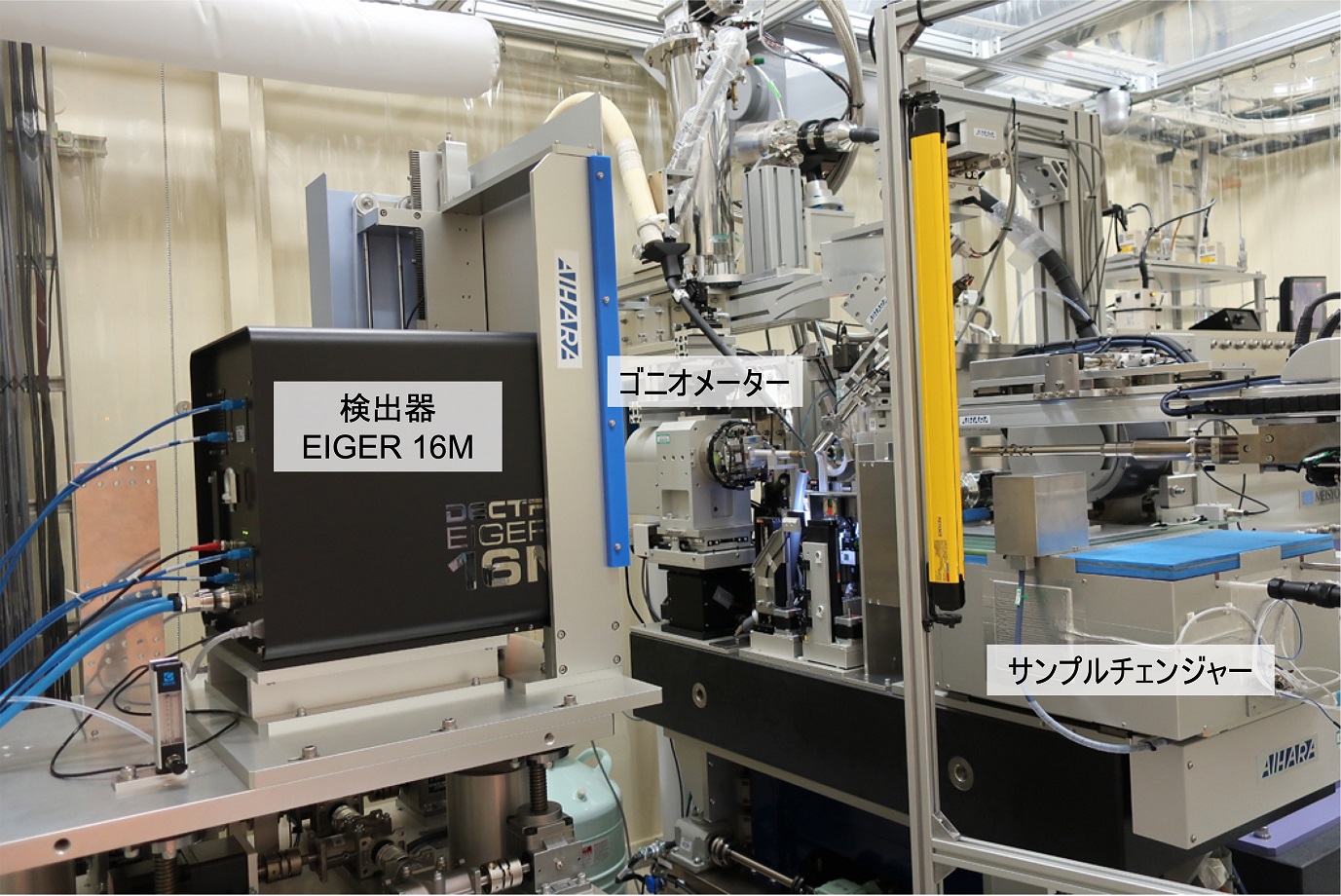 |
|
Intercellular polyhedrosis crystals (size of 3μm) high-resolution synthesis by the Target Protein Beamline (RIKEN beamline) BL32XU. |
Experimental Equipment for Protein Single Crystal Structure Analysis, Structural Biology I (Public Beamline) BL41XU. |
Q:Is SPring-8 involved in the Human Genome Project?
A:Although RIKEN is involved with the Human Genome Project (a project to determine the base sequence of human genes), SPring-8 has no direct participation. However, SPring-8 is involved in the Structural Genome Project (a project to investigate the three-dimensional structure of proteins encoded within genes). Currently, there are three public beamlines for protein structural analysis, and the Structural Genome Project uses 30% of the experimentation time for these beamlines. RIKEN also has two beamlines dedicated to structural genome analysis. Researchers across the country use these beamlines to perform measurements 24 hours a day.
Q:Is a protein crystal destroyed while it is exposed to X-rays to analyze the protein structure?
A:Structural analysis of proteins begins with the production of protein crystals. The crystals are then irradiated with X-rays and structural analysis is performed using a phenomenon called X-ray diffraction. Protein crystals are not hard crystals like diamonds or salts, instead they contain a large number of water molecules and are soft like tofu. When irradiated with X-rays, water molecules become ionized, and the ions react with the surrounding water molecules to produce hydroxyl radicals. This hydroxyl radical breaks protein bindings. Therefore, as X-rays continue to irradiate the protein, the crystals break down little by little (to radiation damage). However, since protein crystals contain billions of individual proteins, it takes a long time for the radiation damage to affect the data measured. Within this time, the X-ray diffraction data is collected. In other words, structural analysis of proteins is completed by the destruction of the crystals. To allow for enough time for data collection, it is necessary to delay the destruction of the crystals. To accomplish this, the crystals are frozen using nitrogen gas before the experiment begins.
Q8. Questions about the SPring-8 facilities
Q:What is SPring-8's receiving voltage? Where are the substation facilities?
A:There is a special high-voltage switch station in front of the main gate of SPring-8, where two lines receive 77,000 volts of power from the Kansai Electric Power Co. From the special high-voltage switch station, power is delivered to the first substation (for the storage ring), then to the second substation (for the beam injection, the linear accelerator and the synchrotron), then the third (for the accelerator and beamline R&D facility, structural biology experimental facility, the New SUBARU, and the X-ray Free Electron Laser SACLA), where the voltage is transformed from 77,000 volts to 6,600 volts. The power is then supplied to each demand location. The actual power used is transformed from 6,600 volts to 400 volts (for power sources), 200 volts (for lighting) and 100 volts (for electrical outlets).
 |
| The third special high-voltage substation. |
Q:How Large is the SPring-8 Site?
A:SPring-8 covers 141 hectares of land (1,410,000 square meters). This is approximately 36 times larger than the Koshien stadium, 30 times larger than the Tokyo Dome Stadium, and 2.8 times larger than the Tokyo Disneyland theme park.
 |
| Aerial Photograph |
Q9. Frequently Asked Questions from Users
Q:Why is SPring-8 shut down for a long time in summer?
A:SPring-8 has an inspection and maintenance period of 1.5 - 2 months at the end of summer and winter, and 1 month at the end of the fiscal year. These periods are dedicated to maintenance of all SPring-8 facilities, the inspection of electricity-receiving equipment stipulated by law, and improvement of the accelerator systems and beamlines to advance performance. The main reason for setting a longer inspection period in the summer is to refrain from operation as much as possible from July to September, when the cost of electricity is higher.
- 詳細
- 投稿者: Super User
- カテゴリ: about
- 参照数: 10988
お問い合わせ
| E-mail: このメールアドレスはスパムボットから保護されています。閲覧するにはJavaScriptを有効にする必要があります。 |
| Fax: 0791-58-2949 |
Contact Us
| |
| |
